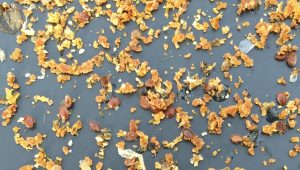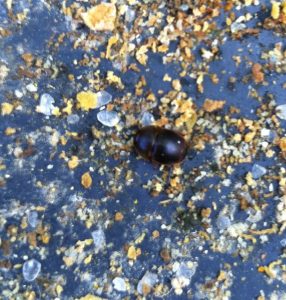Ever since we started beekeeping we have been using the West Trap in conjunction with the bottom board. Over the years we have learned that it is very easy to see what is going on in the hive just by pulling the tray out. We use the west trap to monitor hive activity when we need more clues as to how a colony is doing. We clean them our regularly and keep them in all year long. Most of the time just as a tray with no oil or liquid in them.
For instance, if you see a lot of fine chewed up brown or light brown cappings, you know that brood has hatched. Remember, when the young bees chew out of their cells, the cappings just fall the floor of the hive. If you have a screened bottom board alone, it is not possible to see what is happening without a tray to catch the evidence.
How about white cappings? This would mean that the bees are eating stored honey. Unlike brood, which has a dark capping, honey typically has a white capping on it. If this is observed, it is usually time to get a closer look. It could mean robbing or, if outside of the normal nectar flow, that the bees do not have enough to eat and are eating stored resources. Seeing sugar crystals may indicate this as well, since honey can crystalize and the bees will not be able to eat the crystals. They simply clean them out of the cells.
If you varroa mites are observed then it may be time to see how infested the colony is. Treating may also be in order. How about if a hive beetle is seen hiding down there. Beatles will be chased down into the trays by the bees and will stay there until they find a way up again. Remember, the West Trap is actually a beetle trap. When beetles are seen down there it is definitely time to put the “kill” agent in the trap.
 To trap and kill hive beetles we use mineral oil. It is an agricultural product that can be purchased by the gallon at most farm supply stores. Some beekeepers use vegetable oil. Either will work, but we prefer the synthetic oil that will not ferment on its own. We add a tablespoon or so of cider vinegar as an attractant. Hive beetles cannot resist the smell and enter the trap willingly only to drown in the oil.
To trap and kill hive beetles we use mineral oil. It is an agricultural product that can be purchased by the gallon at most farm supply stores. Some beekeepers use vegetable oil. Either will work, but we prefer the synthetic oil that will not ferment on its own. We add a tablespoon or so of cider vinegar as an attractant. Hive beetles cannot resist the smell and enter the trap willingly only to drown in the oil.
If hive beetles are seen on frames the West Trap may not be enough. We then turn to beetle blasters or some other trap that sits in between the frames. These are filled the same way with mineral oil and cider vinegar. Care must be taken so as not to spill them on the bees or on the frames.
 How about during and after a mite treatment? These trays are very useful when assessing mite drop. How else would we know if a mite treatment has worked or not? After the treatment period seeing dead mites on the tray would indicate that the treatment worked.
How about during and after a mite treatment? These trays are very useful when assessing mite drop. How else would we know if a mite treatment has worked or not? After the treatment period seeing dead mites on the tray would indicate that the treatment worked.
Since we use the screened bottom board we always have a west trap in the tray slot. It allows us to see what our bees are doing, monitor and control pests, and help gauge treatment efficacy. Remember, it is not just trash down in that tray. It is vital beekeeping information!!!